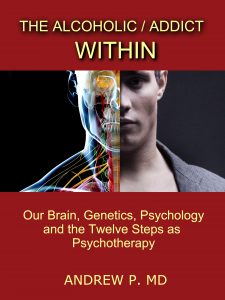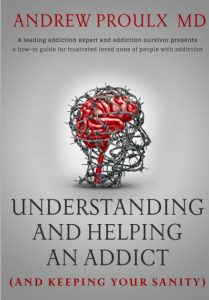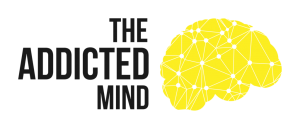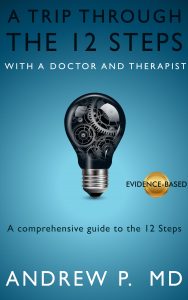Note: the scholarly references used are listed at the bottom of the article.
The disease model of addiction and alcoholism (officially known as substance use disorders) still stirs up debate, and many people continue to view addiction to drugs or alcohol as a choice, a failing of morality. The view of addiction as anything but a disease presents a barrier to recovery for those suffering from an addiction, and perpetuates harmful stigmata. This article will use the science to explain why addiction is, in fact, a disease.
Substance use disorder – otherwise known as addiction – is a disease that affects its victims physically; it makes them physically sick, even kills many. However, it is over and above all a mental disorder – it is defined in the DSM 5 (the "Diagnostic Statistics Manual, 5th Edition, which is the definitive guide to mental health disorders) after all – and it is driven by a pathological psychology that is remarkably uniformly expressed in its victims.
Addiction may be viewed as a disease of paradoxes, because it turns “normal” psychology on its side. Despite the obvious harm (loss of health, wealth, family, friends, job, and even life) that obsessive substance use inevitably causes, people in active addiction continue to use. Maslow’s hierarchy of needs becomes shattered, as the drive to obtain the substance surpasses even the basic physiological needs. As well, there is something the 12 Step program refers to as the insanity of addiction, which is where people with addiction are stuck with a persistent belief that they can stop using their substance on their own, despite multiple failures in the past, and that THIS time they will be able to control their substance use (for more about this odd phenomenon, see The Insanity of Alcoholism/Addiction). The result is that people in active addiction get the hated question: “why don’t you just stop?” Anyone who asks that question should receive the answer: because it is a disease. Like any other disease, it can't be stopped at will for most people, but all people can stop with the right help and approach.

Addiction may be considered a disease based on the fact that a foreign substance enters that body and then uses the body’s own natural processes to propagate itself. A virus causes disease by entering the body, and inserting itself into the cells’ DNA and using the cells’ innate protein synthesis apparatus to reproduce itself and make baby viruses, thereby using the body’s own natural processes to propagate itself. So it is with substances of abuse, which enter the body and hijack and change the mind’s natural psychological processes to propagate their continued use. That alone satisfies the definition of a disease.
For people in active addiction, the addiction long ago stopped being about the substance. They reach a watershed where they are trapped by their psychology, and not by the substance. That this is so is amply demonstrated by the observation that “normal” people would gladly go through medically assisted withdrawal if it meant saving their lives and returning to normal function and health. This is why not everyone who uses substances becomes addicted. The U.S. National Institute on Drug Abuse (NIDA) statistics tell us that by age 26 over 87% of Americans have used alcohol, and just over 50% have used illicit drugs. Yet, only 13% of people end up becoming addicted to these substances. Is this because of genetics? Up-bringing? Past traumas? Sure, but there are many people with an extensive family history of addiction and an abusive and unsupportive upbringing who do not become addicted when they use drugs or alcohol. As well, there are many people with no family history of addiction and who had a fine and privileged upbringing who do. So, while genetics and upbringing play a role, they are not the whole story (for a full explanation about the role that genetics play in addiction and heredity, see Is There an Alcoholism/Addiction Gene?).
Addiction affects those who cannot cope with life, and who therefore shelter in avoidance behaviors. As well, 56% of people with a substance use problem got there as a way of self-treating their mental health symptoms – the so-called “self-medication” route to addiction. Many didn't even realize the had a mental health problem (for more about the intense link between addiction and mental illness, see The Link Between Addiction/Alcoholism and Mental Health).

These dysfunctional coping mechanisms that lead to addiction are attractive because of their immediate and profound calming effects, and their perceived need is brought on by a learned helplessness. These people’s life stressors accumulate and overwhelm them to the point that they don’t even know where to start to deal with them. They develop an external locus of control so profound that they just give up. When that happens, the mind instinctually seeks coping mechanisms to smother the anxiety and pain that comes with learned helplessness; the mind doesn’t care if they are healthy or dysfunctional, it just wants quick relief. Again, the cognitive dissonance that comes with this perceived helplessness comes into play, and addicts begin blaming everyone and everything else for their problems. They become bitter, angry people, and only a beer or a hit will put out that fire.
In the course of active addiction, many people quickly empty their bank accounts, and will use friends and family to obtain more money. When they have used up these sources, they are often driven to crime to support their habit. Guilt, remorse, and shame result, but the addict is driven inexorably to get that next high – no matter how. The guilt and shame that accompany the addiction itself – and the stigmata involved – further drives the guilt and shame. Ordinarily good and well-intentioned people become liars, cheats, and thieves. They neglect people and responsibilities, lose people and property, and avoid work. Considerable cognitive dissonance results as the addiction-driven behaviors drive them further away from their concept of how a “good” person behaves. To the “ordinary” person, the way to resolve this dissonance would be to stop using the substance. However, for the addict, this is not possible. The psychological discomfort caused by this dissonant behavior drives addicts to numb the mind with substance use as a quick-fix, which further propagates the substance use. As with other mental processes alcoholism-addiction pushes the mental process of cognitive dissonance to extremes.
The truth of the psychological and mental mayhem that drives addiction comes from the fact that most people who are physically separated from their drug or alcohol are not cured. The mental and psychological mayhem has to be cleared up before the addict can have the desire and clearness of mind to want to be able to leave the addiction behind. Otherwise, they will head back into it as soon as the dust settles. If I may use a personal example, I will say that I found recovery from profound drug and alcohol addiction by the 12 Step program. It worked for me. Never once did anyone say to me: "Andrew, you gotta stop drinking and using or you're going to lose everything and die!" Never once. Rather, the focus was on clearing all the guilt, shame, anger, and resentment out of my mind and out of my life, and teaching me to live life on life terms, and to handle life's ups and downs without having to run away and use substances to cope. That is the secret to recovery.
I had spend 10 years in medical school and residency, and I had practiced medicine in the ER and psychotherapy in the office for 15 years. I was convinced that I could beat addiction on my own, that I was too smart to fall from it. Wrong! Time and again I failed trying to do it my way, until I finally broke down and let go of my need for control and accepted help wholeheartedly. That is when my drug and alcohol use finally ended. And the experience is definitely not unique to me, this is the usual symptomatology in addiction and alcoholism. This pathological psychology is part of why addiction is a disease; the twisted thinking from the substance's effects keeps the disease going. For more about this psychological phenomenon see The Insanity of Alcoholism/Addiction.
XXXXXXXXXXXXXXXXXXXXXXXXXXXXXXXXXXXXXXXXXXXXXXXXXXXXXXXXXXXXXXXXXXXXXXXXXXXXXXXXXXXXXXXXXXXXXXXXXXXXXXXXXXXXXXXXXXXXXXXXXXXXXXXXXXXXXXXXXXXXXXXXXXXXXXXXXXXXXXXXXXXXXXXXXXXXXXXXXXXXXXXXXXXXXXXXXXXXXXXXXXXXXXXXXXXXXXXXXXXXXXXXXX

Want to get the whole story?
See the author's book, for a guided tour through the brain changes, genetics, and psychology that cause addiction... and how to use this information to beat addiction.
This successful book enables addicts and alcoholics to understand why addictive substances hold such power over them, and it allows non-addicts to understand addiction and all the behaviors that go along with it. Loved ones, teachers, clergy, supervisors, healthcare professionals... anyone who encounters addiction will find this book an eye-opener.
The book is presented in everyday language with a sense of humor that makes it a fun read.
This important book is available in e-book and paperback versions, and for download of free samples at amazon.com Click Here
XXXXXXXXXXXXXXXXXXXXXXXXXXXXXXXXXXXXXXXXXXXXXXXXXXXXXXXXXXXXXXXXXXXXXXXXXXXXXXXXXXXXXXXXXXXXXXXXXXXXXXXXXXXXXXXXXXXXXXXXXXXXXXXXXXXXXXXXXXXXXXXXXXXXXXXXXXXXXXXXXXXXXXXXXXXXXXXXXXXXXXXXXXXXXXXXXXXXXXXXXXXXXXXXXXXXXXXXXXXXXXXXXX
One of the things that keeps people in addiction and alcoholism from accepting that they need to give up control and accept help is the bizarre pride that comes with the rest of the pathological psychology from substance use. As their life spirals downwards, addicts experience a significant drop in their self-esteem. Many feel unworthy of help, unworthy of recovery and a happy, productive life. They become resigned to their addiction. This low self-esteem leads to an inflated pride, as a compensatory mechanism. For most people, pride is a by-product of accomplishment, possessions, and their feelings of self-worth. In other words, they have something to at least partly back up their pride, over-inflated as it may be. Even at the best of times, people do not give themselves unconditional positive regard. Quite the contrary, they are ruthlessly judgemental of themselves; at least inwardly. In order to compensate for their pathetic behavior and situation, addicts will project a fabricated positive view of themselves to others by inflated demonstrations of pride, and conversely by criticizing others in efforts to cut others down beneath them. Their pride shifts from authentic (good) pride to completely hubristic (bad) pride (Dunlop & Tracy, 2013). This is an impediment to admitting to their problem and seeking and accepting helps, which propagates the substance use. It also leads to desperate attempts to seek affirmation – such as sex addiction and co-dependency, and hanging out with other addicts – all of which work contrary to recovery and good health. For more about this weird psychological effect, see The Strange Pride of Alcoholics/Addicts.
Addiction also takes over the minds mechanisms for learning. Because of the extreme level of reward involved, the brain's processes (especially classical and operant conditioning) are enhanced to levels previously unknown to the brain. To make things worse, most addicts spend years performing the same behaviors multiple times daily, so the mind becomes deeply conditioned to the addiction behavior. This has the effect of creating a “deep, learned groove” in the mind, that becomes very difficult to overcome, and probably has much to do with the tendency for addicts to relapse right back to where they were with even one episode of substance use, even many years into recovery.

But, there is more. Addiction is a type of obsessive-compulsive complex, where the obsession (with the substance) is relieved by obtaining this substance. Because the anxiety involved in the obsession is enhanced by the physical withdrawal symptoms, the compulsion (obtaining the substance) is especially compelling. As well, there drive to obtain the substance goes well beyond satisfying the obsession; the need to once again numb the mind to escape from life’s problems is almost as imperious. The psychological relief from satisfying the obsession and indulging the need for the avoidance behavior (i.e. using the substance) greatly enhances the conditioning involved. Much of the difficulty in walking away from drugs or alcohol isn't the physical withdrawal, but because of the difficulty of no longer answering the call of the obsession.
Recent science discoveries have further nailed home the identity of addiction as a disease. It turns out that substances of abuse, including alcohol, creates a pathological inflammation in the brain by altering the gene expression of the brain's immune system. This appears to be the main reason behind the weird brain re-wiring that occurs and that is responsible for the bizarre psychology and behaviors. So, we know there are structural brain changes. To learn more about this new and exciting discovery (which may lead to new therapies for addiction) see Brain Inflammation in Addiction and Alcoholism.
Most people will concede that, once hooked, addicts cannot help but to continue in their addiction, that it is no longer a daily choice. However, many argue that at some point there was a very first drink or drug and that was a conscious choice and therefore everything started as an immoral act. However, almost all people drink at some point in their life, and many will use drugs (87% and 50%, respectively, as previously cited). Many people sleep off their drunk or high, and move on with life without further ado. Many, though, – through the combination of genetics, brain chemistry, psychology, life situation, upbringing, and low capacity to cope with stress – are compelled to keep coming back and doing it again. They start slowly (or quickly) increasing the frequency and intensity of their use, and circle down the drain of addiction. Some do not go on to become addicted, others do (about 13%). Either way, if making a decision to take the first drink or drug makes a person immoral, that’s a lot of immoral people. Exposure to alcohol and drugs is increasingly becoming a normal part of life in our world. Addiction, even though it initially involves a choice, quickly removes the choice, and is not a failing of morality.
Despite its current moniker – Substance Use Disorder – that seems to be in flux in recent years, SUD is not a disorder by DSM 5’s own definitions. A disorder, according to DSM 5, refers to a cluster of symptoms, not accounted for by a more pervasive condition, and there is no external cause. A disease is a pervasive condition where the cause is known. Substance Use Disorder is pervasive and chronic, and has known causes; it is a disease.
Substance Use Disorder – addiction – is a disease. It involves and external substances entering the body and hijacking the body’s usual functions to propagate itself. This can be demonstrated solely using the psychological effects involved in SUD. Widespread acceptance of this model of SUD will help reduce stigmata, and encourage those who suffer to some forward for help.
References:
American Psychiatric Association. (2013). Diagnostic and statistical manual of mental disorders (5th ed.). Washington, DC: American Psychiatric Association.
Bickel, W. K., Johnson, M. W., Koffarnus, M. N., MacKillop, J., & Murphy, J. G. (2014). The behavioral economics of substance use disorders: Reinforcement pathologies and their repair. Annual Review of Clinical Psychology, 10, 641-677. doi: [10.1146/annurev-clinpsy-032813-153724]
Alcoholics Anonymous. (2001). Alcoholics anonymous (4th ed.). New York, NY: Alcoholics Anonymous World Services. Retrieved from http://www.aa.org/bigbookonline/en_f2e.cfm
Dunlop, W.L. & Tracy, J.L. (2013). The autobiography of addiction: Autobiographical reasoning and psychological adjustment in abstinent alcoholics. Memory, 21(1), 64-78. DOI: 10.1080/09658211.2012.713970
Gardner, E. L. (2011). Introduction: Addiction and brain reward and anti-reward pathways. Advances in Psychosomatic Medicine, 30, 22–60. http://doi.org/10.1159/000324065
Harvard Medical School: Harvard Health Publications. (2011). How addiction hijacks the brain. Retrieved from https://www.helpguide.org/harvard/how-addiction-hijacks-the-brain.htm
Heshmat, S. (2018). 10 reasons why people continue to use drugs. Psychology Today. Retrieved from https://www.psychologytoday.com/ca/blog/science-choice/201801/10-reasons-why-people-continue-use-drugs
P., Andrew. (2017). The Alcoholic / Addict Within. St. Catharines, ON: Recovery Folio.
United States National Institute of Health: National Institute on Drug Abuse. (2014). Drugs, brains, and behavior: The science of addiction [Data file]. Retrieved from https://www.drugabuse.gov/publications/drugs-brains-behavior-science-addiction/drugs-brain
United States National Institute of Health: National Institute on Drug Abuse (NIDA). (2015). National survey of drug use and health [Data file]. Retrieved from https://www.drugabuse.gov/national-survey-drug-use-health
Volkow, N.D., Baler, R.D. (2014), Addiction science: Uncovering neurobiological complexity, Neuropharmacology, 76, 235-249. doi: [10.1016/j.neuropharm.2013.05.007]





8 comments
HairstylesNovember 22, 2021 at 9:10 pm
With havin so much content do you ever run into any issues of plagorism or copyright infringement? My website has a lot of completely unique content I’ve either authored myself or outsourced but it appears a lot of it is popping it up all over the web without my authorization. Do you know any techniques to help reduce content from being stolen? I’d definitely appreciate it.
HairstylesMarch 3, 2022 at 1:10 am
Terrific work! That is the kind of information that are supposed to be shared around the net. Disgrace on the search engines for no longer positioning this post upper! Come on over and talk over with my website . Thanks =)
Hairstyles VIPMarch 4, 2022 at 1:07 am
Normally I don’t read article on blogs, but I wish to say that this write-up very compelled me to try and do it! Your writing taste has been amazed me. Thank you, quite great article.
Hairstyles VIPMarch 4, 2022 at 1:31 pm
There’s noticeably a bundle to learn about this. I assume you made certain nice points in options also.
Hairstyles VIPMarch 5, 2022 at 1:04 am
certainly like your website but you have to check the spelling on quite a few of your posts. A number of them are rife with spelling problems and I find it very troublesome to tell the truth nevertheless I抣l surely come back again.
where to buy cialis onlineMarch 5, 2022 at 10:26 am
Excellent goods from you, man. I have understand your stuff
previous to and you are just extremely magnificent. I really like what you’ve acquired here,
really like what you are saying and the way in which you say it.
You make it entertaining and you still care for to keep it smart.
I can’t wait to read far more from you. This is actually a tremendous web site.
Firearms For SaleMarch 13, 2022 at 2:11 pm
453828 992625learning toys can enable your kids to develop their motor skills quite easily;; 126267
atalanta vsMarch 29, 2022 at 11:12 pm
708646 368485really like your imagination!!!! wonderful function!! oh yeah.. cool photography too. 475958